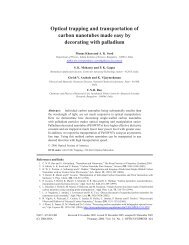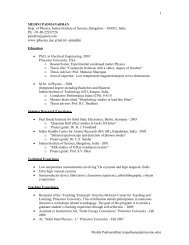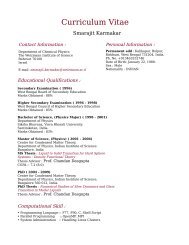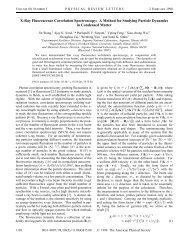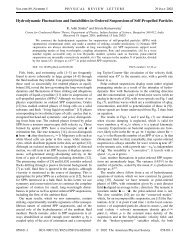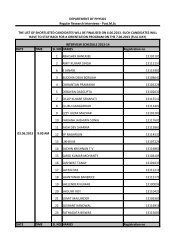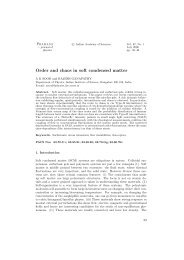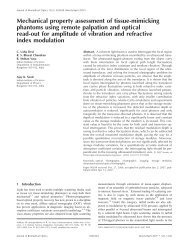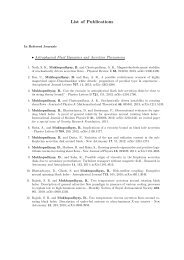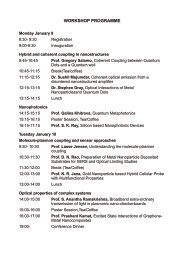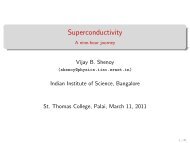Thermoelectric Properties of Fe0.2Co3.8Sb12-xTex ... - Physics
Thermoelectric Properties of Fe0.2Co3.8Sb12-xTex ... - Physics
Thermoelectric Properties of Fe0.2Co3.8Sb12-xTex ... - Physics
Create successful ePaper yourself
Turn your PDF publications into a flip-book with our unique Google optimized e-Paper software.
A new model <strong>of</strong> flow induced voltage generation in<br />
Carbon Nanotubes based on van der Waals friction<br />
K. Sathya Narayanan and A.K. Sood<br />
Department <strong>of</strong> <strong>Physics</strong>, Indian Institute <strong>of</strong> Science, Bangalore-560012, India.<br />
We present here a simple model to explain the plethora <strong>of</strong> experimental results<br />
concerning the flow induced voltage generation in carbon nanotubes which, thus<br />
far, have been only inadequately explained. To do this, we consider the zeroth<br />
order picture <strong>of</strong> the alignment <strong>of</strong> water molecules confined inside the nanotubes<br />
subject to the force field exerted by the imposed flow outside the tubes. These<br />
aligned water molecules polarize the nanotubes containing them, thereby<br />
inducing a potential difference across its length. Importantly, we model this force<br />
field as due to the van der Waals (VdW) frictional stress that exists between any<br />
two dissipating dielectric media in relative motion with each other, which, here, is<br />
between the confined water molecules and the flowing liquid. This simple model,<br />
surprisingly, captures the qualitative behavior observed in the experiments such<br />
as: induced voltage as a function <strong>of</strong> flow velocity, gate voltage and electrolyte<br />
concentration. Further, this also explains the apparently unrelated non-local<br />
voltage generation observed in isolated carbon nanotubes when filled with water<br />
vapor. We extend this even more to try and understand the intriguing<br />
phenomenon <strong>of</strong> flow induced voltage generation in carbon nanotubes trapped in<br />
Ice, wherein the flowing medium is well isolated from the nanotubes by a<br />
sufficiently thick layer <strong>of</strong> ice. We believe that this understanding is crucial to<br />
optimization <strong>of</strong> future energy harvesting devices.



